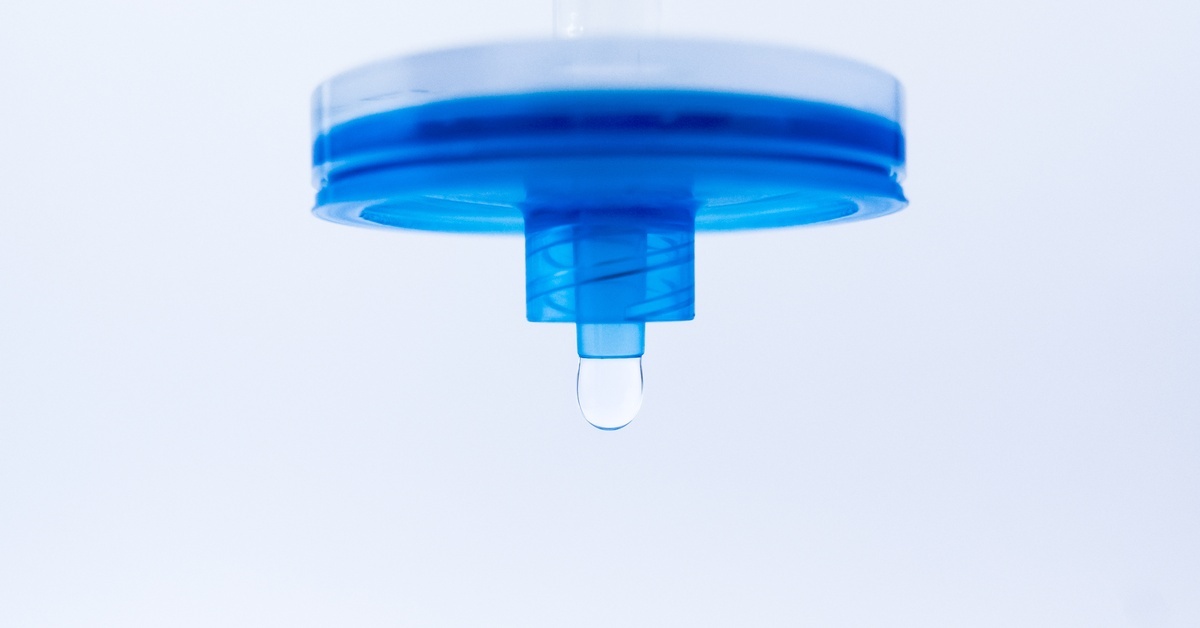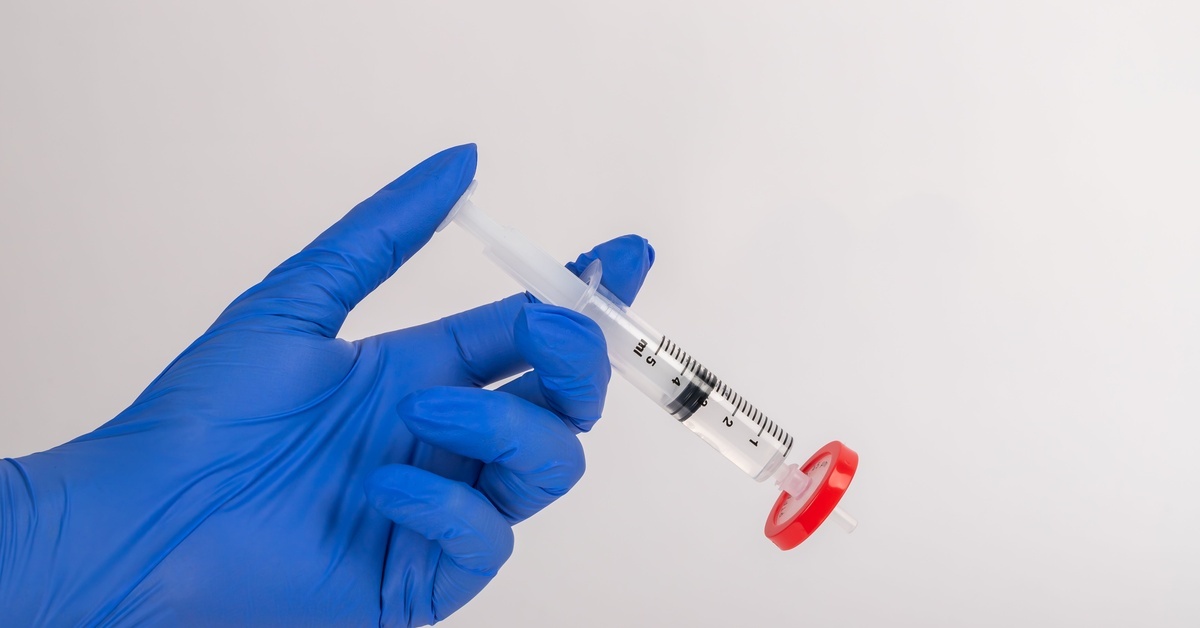Choosing a Syringe Filter for Food and Beverage Analysis
Food and beverage analysis plays a critical role in upholding the safety, quality, and compliance of consumable products. This process involves rigorous testing and sample preparation to identify contaminants, nutritional content, and potential risks in raw ingredients and finished products.
One important tool used in food and beverage analysis is the syringe filter, a small but crucial component that achieves accurate results in laboratory analyses. Not all syringe filters are equal, and choosing the right one can impact the effectiveness of your food and beverage quality protocols.
When selecting a syringe filter for food and beverage analysis, you must consider numerous factors, from the filter material and pore size to chemical compatibility and overall design. This decision can be complex, but with a structured and thoughtful approach, you can select the best option for your needs.
Syringe Filters in Food and Beverage Testing
Syringe filters ensure the accuracy and reliability of analytical processes in food and beverage testing by acting as a barrier that removes particulate matter from samples before analysis. The diverse composition of food and beverage samples, including emulsions, proteins, fats, and sugars, poses a significant challenge to sensitive analytical equipment like chromatographs and spectrometers.
By effectively filtering out impurities and particulates, syringe filters protect these instruments from damage or clogging for precise, consistent results. This step improves the efficiency of the process and complies with strict regulatory standards in the food and beverage industry.
Determining the Appropriate Filter Material
Selecting the right syringe filter material directly influences chemical compatibility and filtration efficiency. Nylon is a highly versatile option, offering compatibility with aqueous and organic samples, making it an excellent choice for general-purpose filtration.
Polytetrafluoroethylene (PTFE) is popular for its exceptional resistance to aggressive chemicals, acids, and solvents, making it ideal for more demanding scenarios. Polyvinylidene fluoride (PVDF) is compatible with proteins and biological substances, offering low protein binding and high chemical resistance.
For applications dealing with more delicate solutions, cellulose acetate can be a great option due to its low binding properties. By carefully evaluating these characteristics, you can ensure maximum filtration effectiveness, sample integrity, and filter longevity.
Evaluating Pore Size Requirements

The pore size of a syringe filter, measured in micrometers (µm), achieves effective filtration for reliable results in food and beverage applications. Common pore sizes range from 0.2 µm to 0.45 µm, and the choice depends on the specific needs of the application.
A 0.2-µm pore size is ideal for microbiological testing, as it effectively removes bacteria and other fine particulates so the integrity of the sample remains uncontaminated. A 0.45-µm pore size may be more appropriate for applications that remove larger particles, such as sediment, as this pore size has less stringent filtration. Selecting the wrong pore size can lead to issues such as clogging, reduced filtration efficiency, or insufficient purification, which can compromise the overall accuracy of the analysis.
Considering Chemical Compatibility
Chemical compatibility is important when selecting a syringe filter, particularly for food and beverage industry applications. These samples often contain reactive substances that can interact with the filter material. If the filter material is incompatible, it could result in the breakdown of the filter, ineffective filtration, or contamination of the sample through chemical leaching.
To avoid these complications, carefully assess the compatibility of the filter material with the sample composition. Consult the manufacturer’s chemical compatibility chart, which provides comprehensive guidance on the materials suitable for specific substances.
Choosing Between Hydrophilic and Hydrophobic Filters
Selecting the appropriate filter type largely depends on the nature of the processed sample, whether it’s aqueous or organic. Hydrophilic filters are water-attracting and do not require pre-wetting, making them ideal for water-based samples requiring seamless filtration. These filters enable efficient and reliable filtration with liquids such as buffers, biological samples, or other aqueous solutions.
Hydrophobic filters repel water and excel in handling organic solvents, nonpolar liquids, or gases, making them indispensable for applications involving oils, hydrocarbons, or airborne filtration. Certain materials, such as PTFE, offer versatility by functioning as hydrophilic and hydrophobic filters; however, pre-wetting with alcohol is necessary before applying them to aqueous samples.
Assessing the Housing Material
When evaluating the housing material of a syringe filter, prioritize durability, chemical resistance, and reliability for precise filtration outcomes. High-quality syringe filters typically feature housings made of robust, inert plastics like polypropylene, which can withstand high pressures during use without compromising performance.
The material must also exhibit excellent resistance to chemical reactions to prevent potential sample contamination, ensuring accuracy and safety in sensitive applications. A well-constructed housing provides long-term stability during filtration processes, making it indispensable for achieving consistent and reliable results.
Ease of Use and Quality Features

Syringe filters produce accurate results, and their design should prioritize ease of use alongside high-quality features. To enhance user experience, filters should be ergonomic and straightforward to use, minimizing the risk of errors during filtration procedures.
A syringe filter paired with a quality plastic needle syringe simplifies handling and reduces contamination risks during usage. These features contribute to consistent performance, making them indispensable for maintaining quality assurance across various applications.
Prioritizing Sterile or Non-Sterile Filter Options
When determining whether to use sterile or non-sterile syringe filters, consider the specific demands of your application. Sterile syringe filters are indispensable for applications such as microbiological testing, cell culture preparation, or sterile sample filtration in food and beverage analysis, as they prevent the introduction of contaminants.
Non-sterile syringe filters are ideal for less critical applications, such as pre-filtration, particulate removal, or analytical sample preparation, where sterility is not a priority. They are a cost-effective choice for high-throughput settings or preliminary filtration steps.
Evaluating Compatibility With Analytical Equipment
When selecting syringe filters, ensuring compatibility with downstream analytical equipment, such as HPLC systems or spectrophotometers, will achieve accurate results and maintain equipment longevity. Improper filtration can lead to issues like clogging, signal interference, or inaccurate readings, which can compromise the quality of your analysis.
To prevent such problems, consider the chemical compatibility of the filter material with your samples and the filter’s ability to handle the required pressure limits of your analytical instruments. Filters without proper ratings for the operating pressures of the equipment can fail during use, causing potential damage and workflow interruptions.
Choosing the right syringe filter for food and beverage analysis may seem minor, but it significantly affects laboratory outcomes. The correct choice reduces contamination risks, ensures compatibility with your sample and analytical method, and protects your equipment from damage. Always consult with experienced suppliers or manufacturers to confirm that your chosen filters meet the unique needs of your food and beverage testing protocols.
Recent Posts
-
The Role of Desiccants in Protecting Hygroscopic Chemicals
Hygroscopic chemicals readily absorb moisture from the surrounding environment, leading to compromis …May 19th 2025 -
All About Pairing Containers With Corrosive Substances
Handling corrosive substances is critical in many industries, including manufacturing, pharmaceutica …May 12th 2025 -
Why Solvent Purity Is Crucial in the World of Chemistry
When producing accurate and reliable results in chemistry, solvent purity is non-negotiable. Many se …May 11th 2025




